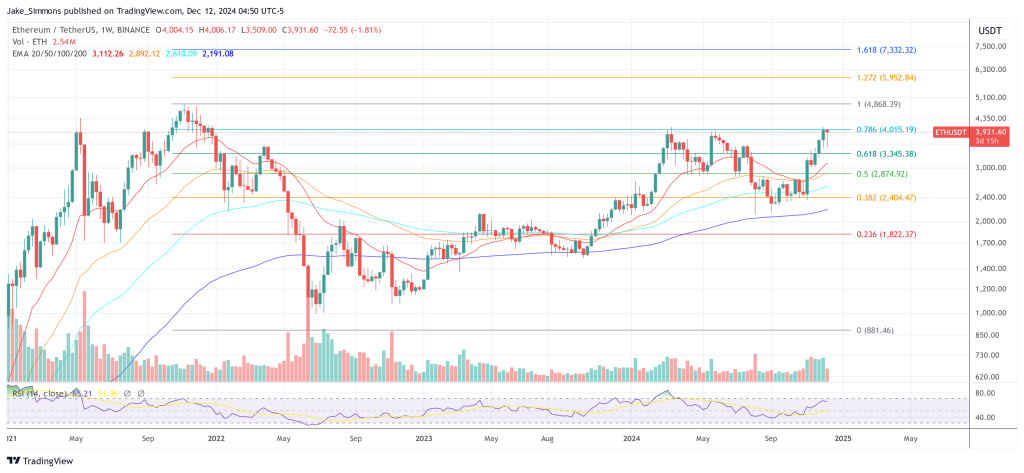In an article on it meets the company’s performance requirements. Sigel noted that “it appears to him that MSFT is open to an ETH ETF as long as they can collect staking revenue.”
Is Microsoft Ready to Spot Ethereum ETFs?
This interpretation came after Amy Hood, Microsoft’s executive vice president and chief financial officer, reiterated the company’s long-standing commitment to digital assets. Without specifically referring to ETH, Hood noted that Microsoft began accepting the cryptocurrency as payment from its customers in 2014 and has continued to do so since.
“I think it’s important to step back and realize that almost a decade ago, maybe even a little more, we started accepting cryptocurrencies as a form of payment from our customers, and that was in 2014. And we continue to do it today. We were among the very first companies to realize and accept this after listening to customers,” Hood said.
According to her, the treasury team regularly reviews all available asset classes with an eye on three key factors that influence future decisions. “Our treasury team, in conjunction with the board, reviews all asset classes available to us. It is important to remember our criteria and our objectives in terms of balance sheet and for cash balances, what is important is to preserve capital, to allow a lot of liquidity to be able to finance our operations, our partnerships and our investments.
Hood said digital assets are “something we cover systematically with our board” as Microsoft evaluates whether a given category is meeting its strategic goals. “So with these three objectives, we look at all asset classes, including cryptocurrency as a form of investment. This is a topic we discuss regularly with our board and continue to evaluate different categories from year to year should our goals change,” she added.
Sigel’s inference that Microsoft may be moving toward ETH-based products is based on three points: the company’s early acceptance of crypto as a payment method, continued evaluation of digital assets at the board of directors and the role that yield generation could play in any investment choice. Sigel said:
1) They accept crypto and believe in its usefulness.
2) The board has already evaluated and will continue to evaluate the digital assets of the reserve.
3) If the asset has a yield = more chance that MSFT will buy it.
However, not everyone found this conclusion compelling. A member of the Ethereum community questioned Sigel’s reading of Hood’s remarks, calling it a “leap” to assume that Microsoft could buy ETH ETFs, while admitting that it remains “possible.”
When asked if Microsoft might also consider Solana (SOL), Sigel responded succinctly: “Yes.” VanEck himself has experience in the altcoin ETF space, offering an Ethereum spot ETF and having filed in June with the U.S. Securities and Exchange Commission for a Solana spot ETF. With the new Trump administration, experts believe that spot altcoin ETFs like Solana are very likely to be approved under new SEC Chairman Paul Atkins.
Meanwhile, Microsoft recently turned down another crypto-related proposal. According to an earlier report from Bitcoinist, a group of shareholders urged the tech giant to include Bitcoin as a reserve asset. This proposal, voted on December 10, failed to gain traction: only 0.55% of shareholders supported it, and the majority effectively rejected the idea of adding BTC to Microsoft’s balance sheet.
Notably, the US SEC approved the first Ethereum spot exchange-traded funds (ETFs) on June 23 this year. A key factor for approval was the removal of staking features in response to the agency’s concerns regarding the potential classification of staking as unregistered title.
At press time, ETH was trading at $3,931.

Featured image from YouTube, chart from TradingView.com




